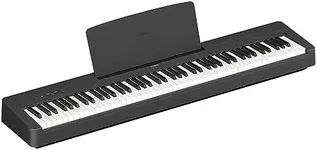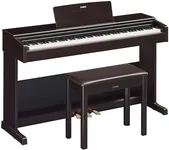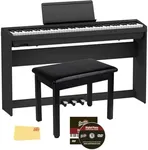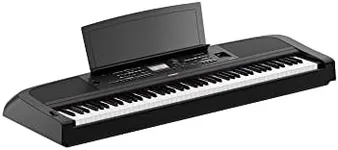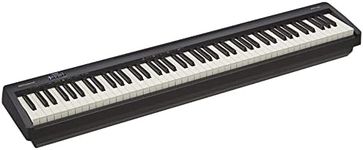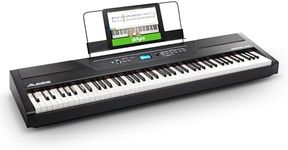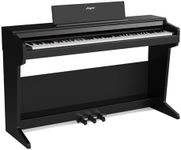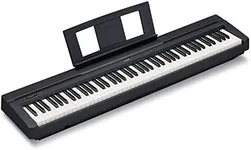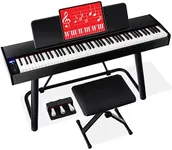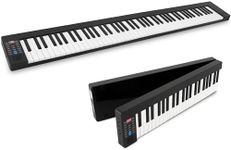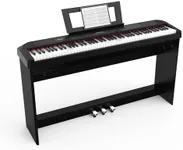Buying Guide for the Best Cheap 88 Key Keyboards
When choosing a cheap 88-key keyboard, it's important to consider several key specifications to ensure you get the best fit for your needs. While budget is a factor, focusing on the right features will help you find a keyboard that meets your playing style and requirements. Here are some key specs to consider and how to navigate them.Key ActionKey action refers to how the keys feel when you press them. This is important because it affects your playing experience and can influence your technique. Key actions can be divided into three main types: weighted, semi-weighted, and unweighted. Weighted keys mimic the feel of an acoustic piano and are ideal for classical and serious piano players. Semi-weighted keys offer a balance between the feel of a piano and the lightness of a synthesizer, suitable for versatile playing styles. Unweighted keys are light and easy to press, making them good for beginners or those who play non-piano sounds. Choose the key action based on your playing style and what feels comfortable to you.
PolyphonyPolyphony is the number of notes a keyboard can produce at the same time. This is important for playing complex pieces or using the sustain pedal, as it ensures that all notes are heard clearly. Polyphony can range from 32 to 256 notes. For beginners or casual players, 32 to 64 notes of polyphony may be sufficient. Intermediate players might prefer 64 to 128 notes, while advanced players and those using the keyboard for complex compositions should look for 128 notes or more. Consider your playing level and the complexity of the music you intend to play when choosing the polyphony.
Sound QualitySound quality is determined by the samples and sound engine used in the keyboard. This is crucial because it affects how realistic and pleasing the instrument sounds. Sound quality can vary widely, even among budget keyboards. Look for keyboards that use high-quality samples and have a good reputation for sound. Listening to demos or trying the keyboard in person can help you judge the sound quality. Choose a keyboard with sound quality that inspires you and matches the type of music you want to play.
ConnectivityConnectivity options determine how you can use the keyboard with other devices. This is important for recording, using software instruments, or connecting to external speakers. Common connectivity options include USB, MIDI, and audio outputs. USB and MIDI connections are useful for connecting to computers and other digital devices, while audio outputs are important for connecting to amplifiers or PA systems. Consider how you plan to use the keyboard and what devices you need to connect to when evaluating connectivity options.
PortabilityPortability refers to how easy it is to move and transport the keyboard. This is important if you plan to take the keyboard to lessons, gigs, or practice sessions outside your home. Portability is influenced by the keyboard's weight and size. Lighter and more compact keyboards are easier to carry but may sacrifice some features or build quality. Heavier keyboards may offer better build quality and features but are less convenient to transport. Consider how often you need to move the keyboard and choose one that balances portability with the features you need.
Built-in FeaturesBuilt-in features such as metronomes, recording capabilities, and learning tools can enhance your playing experience. These features are important for practice, composition, and learning. Keyboards with built-in metronomes help you keep time, while recording capabilities allow you to capture your performances. Learning tools, such as guided lessons and light-up keys, can be beneficial for beginners. Consider which features are most important to you and choose a keyboard that offers the tools you need to support your musical goals.

